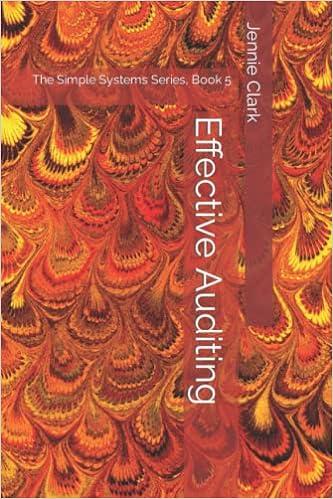Question
Column details: Year/age: Our client is planning to retire in 2025 at the age of 61 Retirement account: It is estimated that at the end

Column details: Year/age: Our client is planning to retire in 2025 at the age of 61 Retirement account: It is estimated that at the end of 2024, they will have approximate $900,000 in their retirement account. This may or may not be enough money to retire. That is the point of this analysis. We will apply a formula that subtracts the yearly draws and then factors in an investment rate of return. Currently this rate of return is 5.7%, which is considered moderate-conservative risk. To compute the balance at the end of 2025 you would take the previous years balance and subtract the current years draw. Then multiply by the rate of return. Yearly Draw: We dont know exactly what this value will be yet as it is dependent on other factors. The first years value will be manually input by the financial planner. To keep up with inflation, this yearly draw should be increased by 3% per year or whatever the inflation rate is. SS (Social Security): Our client is planning to apply for social security at age 67. The annual income from social security is estimated to be $28000. Note that when social security begins, you can lower the yearly portfolio draw. Social security generally increases every year at the rate of inflation. Employment: Our client would like to work part time for a few years, but not past the age of 66. It is estimated our client can make anywhere from 12k-18k per year. Manually enter this information. Expenses: In the first year of retirement, our client estimates expenses will be $45,000 annually. This needs to be increased every year after by the inflation rate. Gross Pay: This is all income summed together Tax Paid: It is estimated that our client will have to pay 15% on total gross pay.
Net Pay: The difference of gross pay and taxes paid. Surplus/Deficit: This is the difference of net pay and expenses. This should never be a negative number or have a surplus of more than $2000. If this number is negative, you will have to adjust the yearly draws or employment throughout the years. After you complete the formulas and functions, analyze when our client will run out of money, if at all. It is estimated that if our client runs out of money after they reach age 90, then they can retire. If you find they run out of money before that, either they cant retire just yet or they may need to make more money during their part time employment (or both). What balance does your client have at the theoretical age of 100? Submit your spreadsheet when complete. Record a short 2-3 minute video describing your formulas and analysis/recommendations for your client. Address all of the questions that are in italics. In your video show what the minimum starting portfolio balance our client needs to retire and not run out of money at age 100. Why is our investment rate and inflation rate in this form-why is it 1.057 and not just 5.7%?
Step by Step Solution
There are 3 Steps involved in it
Step: 1

Get Instant Access to Expert-Tailored Solutions
See step-by-step solutions with expert insights and AI powered tools for academic success
Step: 2

Step: 3

Ace Your Homework with AI
Get the answers you need in no time with our AI-driven, step-by-step assistance
Get Started


